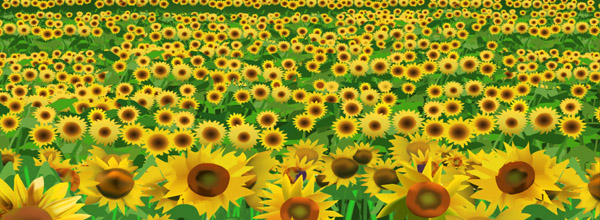Traditionally, agricultural businesses were not used to worrying about matters of design, image and identity because they were issues that only concerned some service companies or businesses in big cities.
In the country, communication used to be different from the activities of companies, with the commercial and social contact usually being based on personal relationships between the parties within a context of few involved people. So, for example, for an agribusiness to design an image seemed to be something excessive and unnecessary. The logic of business seemed to be completely different.
However, in the agricultural sector, there have been noticeable changes: as much in the economic and commercial sphere as in the related political and social necessities that today are impacting directly on the companies and their relation and communication strategies.
Thus, in the first instance, this change is the growth in the number of the actors involved in the business, and especially the diversification of the offer as a consequence of the diversity of products, such as traceability, the variety of production or the certification of origin. Such themes cause a notorious amplification of borders, content and ways of business.
Also it changes the ways of participation of the producers and the companies, planting a vertical growth for the present companies that partake in integrated networks, which constantly produce new protagonists and businesses. Such protagonists are sometimes unknown or only known through medias such as the internet or newspaper articles and therefore are not so familiar.
For instances, today an agribusiness can buy and sell in its country and in the whole world, personally contacting many intermediaries or positioning themselves in alliance with others companies in order to penetrate specific markets.
Secondly, there is an important number of family run agribusinesses that become medium sized businesses that work in more anonymous societies where the owner cannot personally deal with all businesses. In this case, there emerges a new need for the business, where the people that work for him are like him or represent his image.
This growth brings with it the loss of the owner’s personal relationship with their suppliers, customers and peers and it requires new strategies and tactics of systematization of identity and communication. It also requires the construction and daily maintenance of new discourses and explanations of what gives meaning to the identity of the company, forcing it to constantly define their characteristics, potentials and dreams.
Thirdly, even the firms that specialize in producing varieties such as commodities, need to differentiate. For example, organic production or high-oleic oil from conventional production. Also the challenge of conventional demand and service requires differentiation to justify a purchase or a contract over another, which makes one remember good experiences and good commercial attributes. The differentiation of forms, views, qualities, values and ethics are needed in order to occupy the niche your insertion strategy calls for.
Fourthly, we start to perceive the agribusiness recognition of the impact a good image and identity which creates the ability to mark their presence, to be remembered, understood and valued. Because the sector is learning to recognize the value of intangibles, this represents a cultural change.
What’s more, there is the need for design communication, identity and image of the groups related to the country, from the conceptual approach of the synthesis of a battle flag of the sector to the start-up value of rural exposure. This is because these organizations all face the challenge of defending interests, retaining the their members, achieving new accessions, and in some cases promoting specific products.
Finally, provincial cities also need design when seeking to attract investment, tourism and recognition to expand the framework for negotiations with the province or the nation and clearly need to show the best of themselves and their potentialities.
Following all this, and after further political, economic and cultural deployment, the country needs more and better visibility. Therefore, the country has never had as much need to design and present.
©Sebastian Guerrini, 2009




